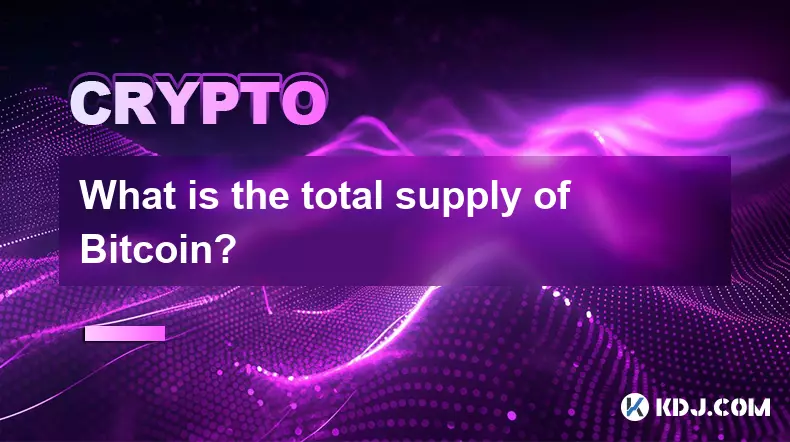-
 bitcoin
bitcoin $99177.955738 USD
-7.32% -
 ethereum
ethereum $3187.183061 USD
-12.38% -
 tether
tether $0.999809 USD
0.00% -
 xrp
xrp $2.117933 USD
-9.42% -
 bnb
bnb $906.710033 USD
-9.17% -
 solana
solana $149.367737 USD
-10.74% -
 usd-coin
usd-coin $0.999816 USD
0.01% -
 tron
tron $0.281498 USD
-0.38% -
 dogecoin
dogecoin $0.156292 USD
-8.00% -
 cardano
cardano $0.500744 USD
-10.19% -
 hyperliquid
hyperliquid $38.087358 USD
-4.58% -
 chainlink
chainlink $14.097831 USD
-8.54% -
 bitcoin-cash
bitcoin-cash $463.329916 USD
-9.22% -
 ethena-usde
ethena-usde $0.999078 USD
-0.01% -
 unus-sed-leo
unus-sed-leo $9.475862 USD
-0.79%
What is Bitcoin, and how does it function as a digital currency?
Bitcoin is a decentralized digital currency using blockchain technology to enable secure, transparent peer-to-peer transactions without central oversight. (154 characters)
Aug 02, 2025 at 04:01 am

Understanding Bitcoin as a Digital Currency
Bitcoin is a decentralized digital currency that operates without the need for a central authority such as a bank or government. Introduced in 2009 by an anonymous entity known as Satoshi Nakamoto, Bitcoin allows peer-to-peer transactions over the internet using a technology called the blockchain. Unlike traditional currencies, Bitcoin is not issued or controlled by any single institution. Instead, it relies on a distributed network of computers to validate and record transactions. Each transaction is grouped into a block, and these blocks are cryptographically linked to form a chain—hence the term blockchain. This structure ensures transparency, immutability, and resistance to tampering.
The total supply of Bitcoin is capped at 21 million coins, which introduces scarcity similar to precious metals like gold. This limited supply is hardcoded into the protocol and enforced by the network’s consensus rules. As of now, over 19 million Bitcoins have been mined, with new coins introduced through a process known as mining. The issuance of new Bitcoins occurs approximately every 10 minutes when a miner successfully adds a new block to the blockchain. This issuance rate is halved roughly every four years in an event known as the halving, which helps control inflation and maintain long-term value.
How Bitcoin Transactions Work
When a user sends Bitcoin to another user, the transaction is broadcast to the Bitcoin network. Before it is confirmed, it must be verified by network participants known as miners. Each transaction includes a digital signature that proves ownership of the Bitcoin being spent. This signature is created using the sender’s private key, which must remain confidential. The recipient’s address, derived from their public key, serves as the destination for the funds.
The verification process involves several critical steps:
- Nodes on the network check the transaction’s validity, ensuring the sender has sufficient balance and the digital signature is correct.
- Valid transactions are collected into a mempool, a waiting area for unconfirmed transactions.
- Miners select transactions from the mempool to include in the next block, often prioritizing those with higher transaction fees.
- Once a block is mined and added to the blockchain, the transactions within it receive their first confirmation. Additional confirmations occur as more blocks are added on top.
Each confirmation increases the transaction’s security. Most services require at least six confirmations before considering a transaction final, minimizing the risk of reversal due to network forks.
The Role of Blockchain Technology
The blockchain is the foundational technology that enables Bitcoin to function securely and transparently. It is a public ledger that records every Bitcoin transaction ever made. Because the ledger is distributed across thousands of nodes worldwide, no single entity can alter past records. Each block contains:
- A list of transactions
- A timestamp
- A reference to the previous block’s hash
- A nonce used in the mining process
The cryptographic hash function ensures that any change to a block’s data would alter its hash, breaking the chain and making tampering immediately detectable. This immutability is crucial for maintaining trust in the system. Additionally, the blockchain is transparent—anyone can view transaction history using a blockchain explorer, although user identities are pseudonymous.
Nodes maintain copies of the blockchain and work to reach consensus on its state. When discrepancies arise, the network follows the longest valid chain rule, accepting the version of the blockchain with the most accumulated proof-of-work as the authoritative record.
Bitcoin Mining and Network Security
Mining is the process by which new blocks are added to the Bitcoin blockchain and new Bitcoins are issued. Miners use specialized hardware to solve complex cryptographic puzzles. The first miner to find a solution broadcasts the new block to the network. Other nodes verify the solution and, if valid, add the block to their copy of the blockchain.
The mining process relies on proof-of-work (PoW), a consensus mechanism that requires significant computational effort. This effort acts as a deterrent against malicious activity, as launching an attack would require controlling more than 50% of the network’s total computing power—a scenario known as a 51% attack. Given the immense scale and distribution of the Bitcoin network, such an attack is currently infeasible.
Miners are incentivized through two sources:
- Block rewards: Newly minted Bitcoins awarded for successfully mining a block.
- Transaction fees: Payments attached to transactions by users to prioritize their inclusion.
Over time, as block rewards decrease due to halving events, transaction fees are expected to become the primary incentive for miners.
Storing and Managing Bitcoin
To interact with Bitcoin, users need a wallet, which stores private and public keys. Private keys are essential for signing transactions and must be kept secure. Public keys generate Bitcoin addresses, which are shared to receive funds. Wallets come in various forms:
- Hardware wallets: Physical devices that store keys offline, offering high security.
- Software wallets: Applications on computers or smartphones, convenient but more vulnerable.
- Paper wallets: Printed copies of keys, secure if stored properly but prone to physical damage.
Backing up a wallet is critical. Losing access to private keys means losing access to the associated Bitcoin, with no recovery option. Users should enable additional security features such as passphrases, multi-signature authentication, and encryption.
Common Questions About Bitcoin
How do I buy Bitcoin?To purchase Bitcoin, use a cryptocurrency exchange such as Coinbase, Kraken, or Binance. Create an account, complete identity verification, link a payment method, and place an order. After purchase, transfer Bitcoin to your personal wallet for enhanced security.
Can Bitcoin transactions be reversed?No. Once confirmed, Bitcoin transactions are irreversible. This design prevents fraud but places full responsibility on users to verify recipient addresses and amounts before sending.
Is Bitcoin legal?Bitcoin’s legal status varies by country. It is legal in the United States, Japan, and most of Europe. Some countries, like China, restrict its use. Always check local regulations before engaging in Bitcoin transactions.
What happens if I lose my Bitcoin wallet?If you lose access to your wallet and do not have a backup of your private keys or recovery phrase, the Bitcoin becomes permanently inaccessible. No central authority can restore access, emphasizing the importance of secure storage practices.
Disclaimer:info@kdj.com
The information provided is not trading advice. kdj.com does not assume any responsibility for any investments made based on the information provided in this article. Cryptocurrencies are highly volatile and it is highly recommended that you invest with caution after thorough research!
If you believe that the content used on this website infringes your copyright, please contact us immediately (info@kdj.com) and we will delete it promptly.
- Bitcoin's Wild Ride: Saylor, Kiyosaki, and the Quest for $200K
- 2025-11-05 10:50:13
- Culex, Cardano, and Aster: A Crypto Cocktail of Mosquitoes, Dips, and CZ Fuel
- 2025-11-05 11:00:17
- Crypto Presales, Coin Growth, and Established Coins: Navigating the 2025 Buzz
- 2025-11-05 11:00:17
- La Culex, Crypto Investment, and Pudgy Penguins: A NYC Perspective
- 2025-11-05 10:30:13
- Zcash Defies Crypto Crash: Reversal Risk on the Horizon?
- 2025-11-05 11:00:01
- Score Big with BetMGM: NBA, NFL, and the TOP150 Bonus Code
- 2025-11-05 08:50:13
Related knowledge

What is the total supply of Bitcoin?
Oct 10,2025 at 01:55pm
Total Supply of Bitcoin1. The total supply of Bitcoin is capped at 21 million coins. This limit is hardcoded into the Bitcoin protocol and cannot be a...

Can you buy a fraction of a Bitcoin?
Oct 10,2025 at 06:01pm
Understanding Fractional Bitcoin Ownership1. Yes, you can buy a fraction of a Bitcoin. The smallest unit of Bitcoin is called a satoshi, which represe...

How to buy Bitcoin for the first time?
Oct 21,2025 at 11:00am
Understanding Bitcoin and Its Value1. Bitcoin is a decentralized digital currency that operates on a peer-to-peer network without the need for interme...

Why is Bitcoin considered a revolutionary technology?
Aug 12,2025 at 08:29pm
Decentralization and the Elimination of Central AuthoritiesThe core innovation behind Bitcoin lies in its decentralized architecture, which fundamenta...

Why is Bitcoin considered a revolutionary technology?
Aug 10,2025 at 07:42pm
Decentralized Architecture and Trustless TransactionsBitcoin is considered revolutionary because it introduced a decentralized architecture that opera...

What are the key features of Bitcoin?
Aug 10,2025 at 02:50am
Decentralization and Peer-to-Peer NetworkOne of the most defining characteristics of Bitcoin is its decentralized nature. Unlike traditional financial...

What is the total supply of Bitcoin?
Oct 10,2025 at 01:55pm
Total Supply of Bitcoin1. The total supply of Bitcoin is capped at 21 million coins. This limit is hardcoded into the Bitcoin protocol and cannot be a...

Can you buy a fraction of a Bitcoin?
Oct 10,2025 at 06:01pm
Understanding Fractional Bitcoin Ownership1. Yes, you can buy a fraction of a Bitcoin. The smallest unit of Bitcoin is called a satoshi, which represe...

How to buy Bitcoin for the first time?
Oct 21,2025 at 11:00am
Understanding Bitcoin and Its Value1. Bitcoin is a decentralized digital currency that operates on a peer-to-peer network without the need for interme...

Why is Bitcoin considered a revolutionary technology?
Aug 12,2025 at 08:29pm
Decentralization and the Elimination of Central AuthoritiesThe core innovation behind Bitcoin lies in its decentralized architecture, which fundamenta...

Why is Bitcoin considered a revolutionary technology?
Aug 10,2025 at 07:42pm
Decentralized Architecture and Trustless TransactionsBitcoin is considered revolutionary because it introduced a decentralized architecture that opera...

What are the key features of Bitcoin?
Aug 10,2025 at 02:50am
Decentralization and Peer-to-Peer NetworkOne of the most defining characteristics of Bitcoin is its decentralized nature. Unlike traditional financial...
See all articles










































































